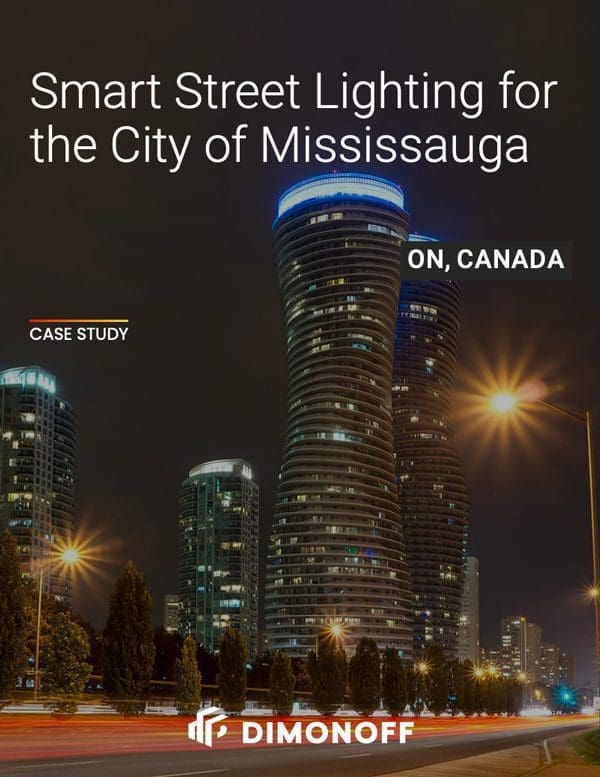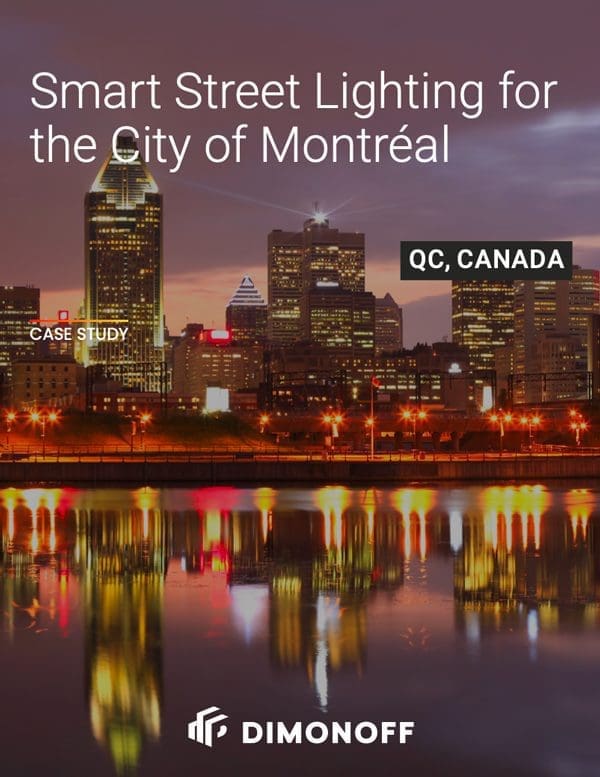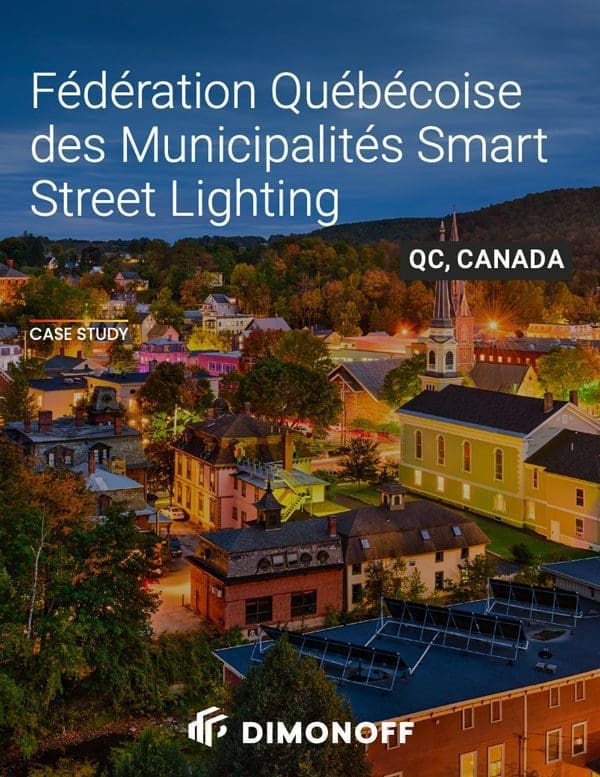Dimonoff is heading to the CPA Conference and Trade Show, taking place in Vancouver, BC, from October 5-8, 2025
Smart Cities
Future-Proof Smart Lighting Solutions to Enable Urban Sustainability and Foster Cities Growth
By leveraging Internet of things (IoT), cities now have access to a number of technologies that not only help improve the quality of life of citizens but also increase the efficiency of public services.
At Dimonoff, we strongly believe that street lighting is the default application to introduce smart technologies into city environments. This is because street lighting provides the base infrastructure for a communication network (Mesh Topology or 5G) and other future IoT technologies that help cities become smarter.
What Cities Need from IoT Technologies
Future-Readiness
Like any large infrastructure project, the chosen system becomes the proper foundation for many city services and for many years. That is why it is essential to think through the kind of technologies it should be able to support.
Security
Smart Cities offer a high quality of life thanks to digital infrastructure. Smart security can help cities to improve their street safety. Emergency public alert systems can broadcast audio and visual alerts that specify the nature of the emergency to anyone who can see or hear the alert.
Openness
Openness is key to any smart city system. As street lighting is usually the foundation of a smart city platform, it is particularly important to think about openness when choosing a street lighting system. In fact, this system will become the backbone for other systems and applications in the future.
How to Choose the Right Smart City Vendor?
Smarter Streetlights for a Smarter City
City of Mississauga, ON - Smart Street Lighting Project
Smart Lighting sensors provide known benefits such as low energy usage but can also provide major cost savings. Consult the case study with the City of Mississauga and get to know how this city can provide annual savings of over $3 million and a payback period of under six years through their smart lighting control system:
City of Montreal, QC - Smart Street Lighting Project
Check out the case study with the City of Montréal and learn how an extensive smart streetlight conversion project can drastically lower energy consumption and improve the energy efficiency of the city:
Province of Quebec - Smart Street Lighting Project
Smart At Scale: Best Practices for Smart Cities
While cities are converting their street lighting from HPS to LED fixtures, they should consider adding a wireless control and monitoring system to their public infrastructure. Learn how we can help your city to switch from street lighting to smart lighting and from smart lighting to a smart city.
This business case demonstrates how smart solutions can help manage connected devices such as lighting assets and sensors to:
- Increase mobility with parking spaces management
- Increase security with sound detection
- Increase environment sensing with water level or gas detection
Smart Environment: Improving Energy Efficiency & Citizens’ Quality of Life
As environmental pressures and infrastructure needs mount, cities everywhere are increasingly finding ways to use digitization and wireless technology to operate smarter, distribute energy more efficiently and reduce their greenhouse gas emissions.
Smart Environment is a concept that should be implemented in all the cities around the world towards a cleaner and a healthier ecosystem for citizens. Therefore, cities should benefit from smart sensors to improve the monitoring of air quality and other environmental parameters (measurement of pressure, temperature, humidity, snow levels, water consumption, sewer levels, etc.). Smart environmental sensors can also provide access to useful data that allows data-driven decision-making about the city’s key indicators.
Measurable Return on Investment for Smart City Initiatives
Shawinigan - The first city having installed a smart lighting system in the province of Quebec in Canada
Cities like Shawinigan have been capable of measuring their ROI through a substantial annual reduction on its lighting and maintenance bills as well as a reduction of their daily energy consumption by 1.99 MWh.
By using IoT, smart streetlights can be used beyond their primary function and integrate various connected devices like air-quality sensors, sound recognition sensors, and license plate recognition cameras among many others.
Smart City initiatives can also create other wide-ranging qualitative benefits such as citizen satisfaction rates and reduction of greenhouse gas emissions.


























